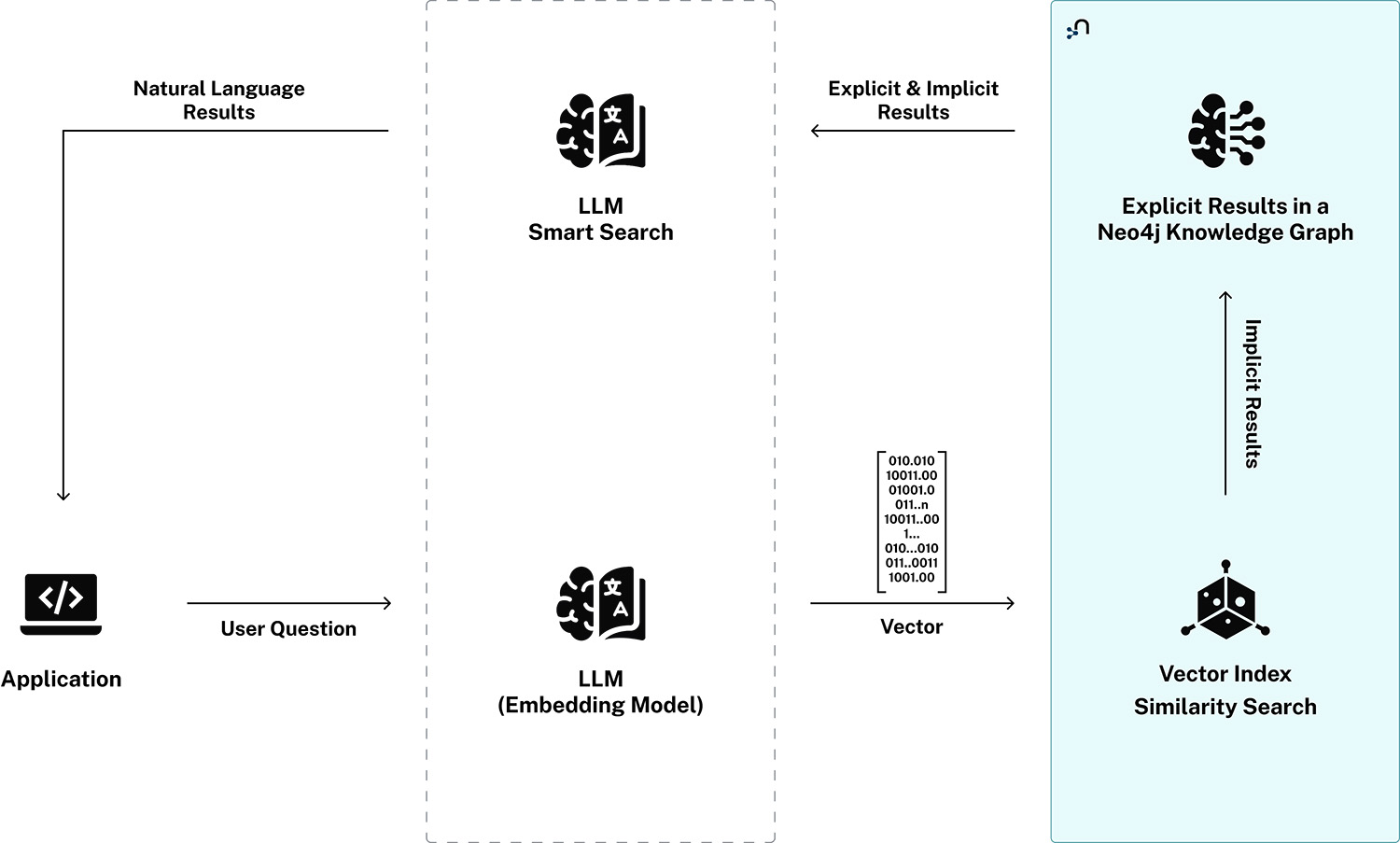Knowledge graphs (KGs) enable large language models (LLMs) to generate more accurate, trustworthy AI outputs. Neo4j is leader in this space and make use of KG through such as generative AI techniques like GraphRAG:
- Knowledge graphs are critical for managing complex data relationships and making strategic AI-driven decisions.
- The combination of KGs and LLMs improves AI accuracy, diversity of viewpoints, and explainability.
A knowledge graph is a structured representation of knowledge that captures entities (e.g., people, places, concepts) and the relationships between them. Knowledge graphs are often used to represent and store factual information in a way that machines can easily query and understand. They use a graph structure where: Nodes represent entities (like “Company A” or “Person B”). Edges represent relationships between those entities (like “works at” or “founded”).

KGs act as a control for Large Language Models (LLMs) by enabling knowledge-based reasoning based on the connections in the data
No significant limitations or concerns were highlighted, but the implementation of KGs may require technical expertise and resources.
How does the integration of knowledge graphs and LLMs improve explainability in AI-generated responses?
https://neo4j.com/blog/genai-knowledge-graph-deep-understanding/
Key characteristics of knowledge graphs:
- Structured data: Information is represented in a highly structured form (triples: subject, predicate, object) that allows efficient querying and reasoning.
- Semantic relationships: Entities are connected by meaningful relationships, often using ontologies and taxonomies to organize the knowledge.
- Reasoning and inference: Some knowledge graphs can support reasoning capabilities, where new information can be inferred based on the existing relationships and rules (e.g., if “Person A works at Company B,” and “Company B is in Industry C,” it can infer that “Person A works in Industry C”).
Example of a Knowledge Graph:
- Nodes:
Barack Obama,United States,President. - Edges:
Barack Obama -- President of -- United States.